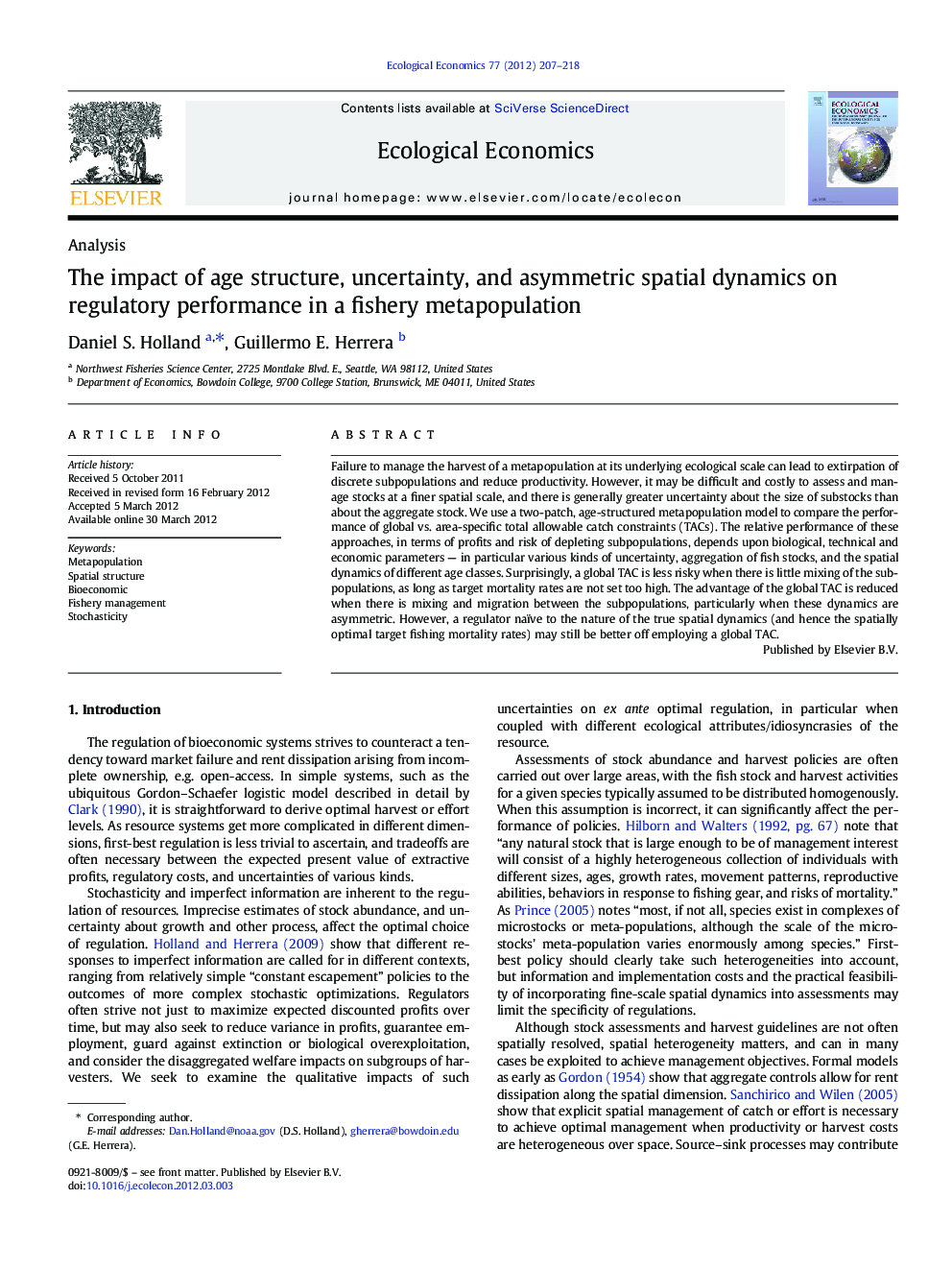| کد مقاله | کد نشریه | سال انتشار | مقاله انگلیسی | نسخه تمام متن |
|---|---|---|---|---|
| 5050291 | 1476402 | 2012 | 12 صفحه PDF | دانلود رایگان |

Failure to manage the harvest of a metapopulation at its underlying ecological scale can lead to extirpation of discrete subpopulations and reduce productivity. However, it may be difficult and costly to assess and manage stocks at a finer spatial scale, and there is generally greater uncertainty about the size of substocks than about the aggregate stock. We use a two-patch, age-structured metapopulation model to compare the performance of global vs. area-specific total allowable catch constraints (TACs). The relative performance of these approaches, in terms of profits and risk of depleting subpopulations, depends upon biological, technical and economic parameters - in particular various kinds of uncertainty, aggregation of fish stocks, and the spatial dynamics of different age classes. Surprisingly, a global TAC is less risky when there is little mixing of the subpopulations, as long as target mortality rates are not set too high. The advantage of the global TAC is reduced when there is mixing and migration between the subpopulations, particularly when these dynamics are asymmetric. However, a regulator naïve to the nature of the true spatial dynamics (and hence the spatially optimal target fishing mortality rates) may still be better off employing a global TAC.
⺠Profits and depletion risk of fisheries depend on appropriate management scale. ⺠Optimal management scale depends on spatial dynamics but also uncertainty. ⺠Managing a metapopulation with global TAC can be less risky than area-specific TACs. ⺠Area TACs can be advantageous when there is mixing and asymmetric migration. ⺠However, a naïve regulator may still be better off employing a global TAC.
Journal: Ecological Economics - Volume 77, May 2012, Pages 207-218